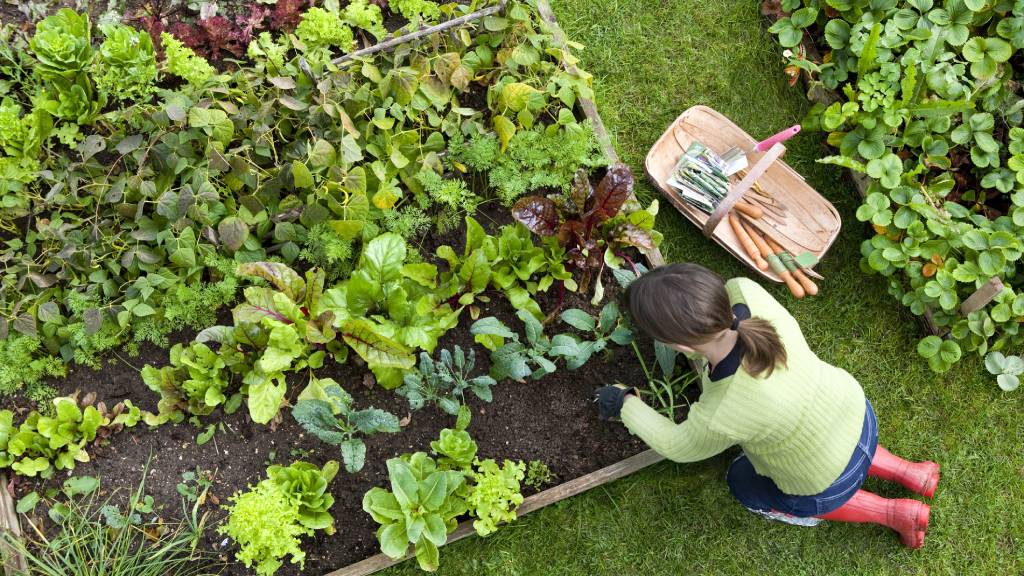Imagine stepping outside, plucking fresh tomatoes, snipping fragrant herbs, or harvesting crunchy lettuce—all from your own garden. Edible gardening isn’t just for those with sprawling backyards; it’s a rewarding activity anyone can embrace, even in the smallest spaces.
Whether you have a sunny windowsill, a small balcony, or a patch of backyard soil, growing your own food is easier than you think. Here’s how to get started on your edible gardening journey.
1. Why Grow Your Own Food?
Freshness and Flavor:
Homegrown produce tastes better—it’s fresher and free of preservatives.
Healthier Eating:
Growing your own food encourages more fruits and veggies in your diet while reducing reliance on store-bought produce that may contain chemicals.
Cost Savings:
A small initial investment in seeds and soil can yield months of fresh food.
Therapeutic Benefits:
Gardening reduces stress, boosts mood, and provides a sense of accomplishment.
2. Starting Small: What Can You Grow?
You don’t need a farm to start an edible garden. Plenty of fruits, veggies, and herbs thrive in small spaces.
Herbs:
Basil, mint, parsley, cilantro, and chives grow well in pots and require minimal care.
Leafy Greens:
Spinach, lettuce, and kale are easy to grow and perfect for containers.
Vegetables:
Cherry tomatoes, peppers, radishes, and carrots can thrive in small gardens or balcony planters.
Fruits:
Strawberries, dwarf citrus trees, and blueberries grow well in pots.
3. Getting Started: The Basics of Edible Gardening
Choose the Right Space:
Identify an area with at least 4–6 hours of sunlight daily. Even a sunny windowsill can work for certain plants.
Pick Suitable Containers:
For limited spaces, use pots, hanging baskets, or vertical planters. Ensure they have drainage holes to prevent waterlogging.
Select Quality Soil:
Opt for nutrient-rich, well-draining potting soil. Avoid using garden soil in containers as it may compact and hinder root growth.
Start with Seeds or Seedlings:
Beginners can use seedlings from a nursery, but starting from seeds is cost-effective and rewarding.
4. Tips for Thriving Plants
Water Wisely:
Overwatering is a common mistake. Water deeply but less frequently, allowing the soil to dry slightly between watering sessions.
Feed Your Plants:
Use organic fertilizers or compost to keep plants healthy and productive.
Prune and Harvest Regularly:
Prune dead leaves to encourage growth and harvest regularly to keep plants producing.
Pest Control:
Monitor for pests and use natural remedies like neem oil or companion planting (e.g., marigolds deter aphids).
5. Creative Gardening in Tiny Spaces
Vertical Gardening:
Use wall-mounted planters or hanging pots to grow herbs and trailing plants.
Window Boxes:
Perfect for growing leafy greens or herbs, window boxes utilize outdoor ledges efficiently.
Repurpose Items:
Turn old buckets, crates, or even mason jars into unique planters.
Hydroponics:
For an indoor garden, consider hydroponic systems that grow plants without soil, perfect for kitchens or small apartments.
6. Edible Gardening Year-Round
Don’t let seasons stop you. Some plants, like herbs and leafy greens, grow well indoors year-round with proper care. Use grow lights for adequate light during shorter days.
7. The Joy of Edible Gardening
Beyond providing fresh food, edible gardening connects you with nature and teaches patience and care. It’s also a fantastic way to involve kids in learning where food comes from and developing healthier eating habits.
Conclusion: A Small Step to Big Rewards
Edible gardening isn’t just about food—it’s about cultivating joy, health, and sustainability. Whether you grow a single basil plant on your windowsill or a variety of veggies on your balcony, every little effort brings you closer to nature and nourishes your soul (and stomach!).
So, are you ready to dig in? Share your gardening goals or favorite tips below!
